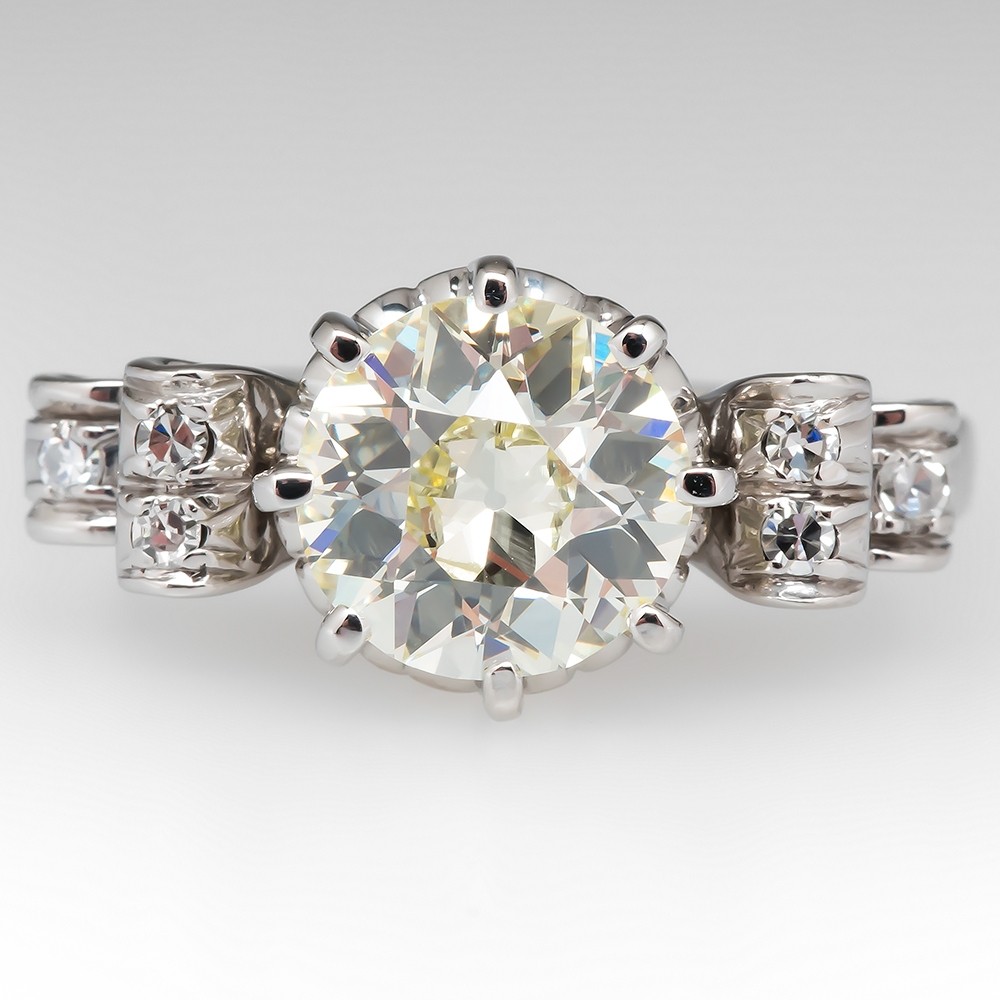Posted in: All Things Jewelry, Jewelry History
 1930's Art Deco Palladium Engagement Ring. Photo ©2018 EraGem Jewelry.
Palladium is a noble metal in the same family as platinum. Though it was discovered in 1802, by the chemist William Hyde Wollaston, he did not take credit for the discovery until several years later.
1930's Art Deco Palladium Engagement Ring. Photo ©2018 EraGem Jewelry.
Palladium is a noble metal in the same family as platinum. Though it was discovered in 1802, by the chemist William Hyde Wollaston, he did not take credit for the discovery until several years later.
Palladium History
In July 1802, Wollaston made note of his discovery in his journal. The following month, he named the metal after the asteroid Pallas which was discovered in March that year. Wollaston's discovery began with crude platinum unearthed in South America. Upon arriving at his lab, Wollaston dissolved the ore in aqua regia, following which he neutralized the solution with sodium hydroxide. He continued the process of separating the different metals within the ore. Finally, he added mercuric cyanide to form palladium cyanide. When heated, pure palladium separates completely. Surprisingly, Wollaston introduced this new metal in a strange way. He made arrangements with a London mineral dealer to offer a quantity of the metal for sale. To advertise the metal, Wollaston circulated anonymous handbills describing the metals unique properties. This unprecedented approach brought suspicion from other prominent chemists. One, Richard Chenevix, proclaimed the metal to be an alloy of platinum and mercury. Once again choosing to remain anonymous, Wollaston offered a reward of 20 guineas to anyone who could produce synthetic palladium. No one came forward to claim the reward. Finally, in 1805, Wollaston spoke about the process of isolating the noble metal, as well as illuminating its unique properties. He saved his big reveal for the end of his presentation, surprising everyone with the news that he was the anonymous discoverer of the metal.Palladium Sources and Uses
Generally this noble metal forms in the same zones as nickel, copper, silver, gold, and platinum. Considered a byproduct of these metals, it's actually rarer even than its cousin platinum. The most abundant source throughout history has been Russia. However, it is also found in Montana (USA), Ontario (Canada), South Africa, South America, and Australia. Today, Canada and South Africa provide most of the commercial-grade palladium. Obviously, its used as an alloy for making fine jewelry. However, its primary commercial application is the manufacture of catalytic converters. In fact, as palladium grows scarcer, recycling will emerge as a primary source for all uses. As the price of gold and platinum rise, and as the availability of platinum declines, palladium has experienced a revival in Chinese jewelry in particular. A lustrous white metal, it holds up beautifully under the rigors of daily wear. In recent years, palladium received its status as a precious metal. In 2009, the industry agreed upon a new hallmark for it. Stamped with the number 950, the hallmark bears the head of Pallas Athena to distinguish it from platinum. We would love to show you our selection of palladium jewelry. Please give us a call to schedule an appointment with a member of our team.6 years ago
4 view(s) 